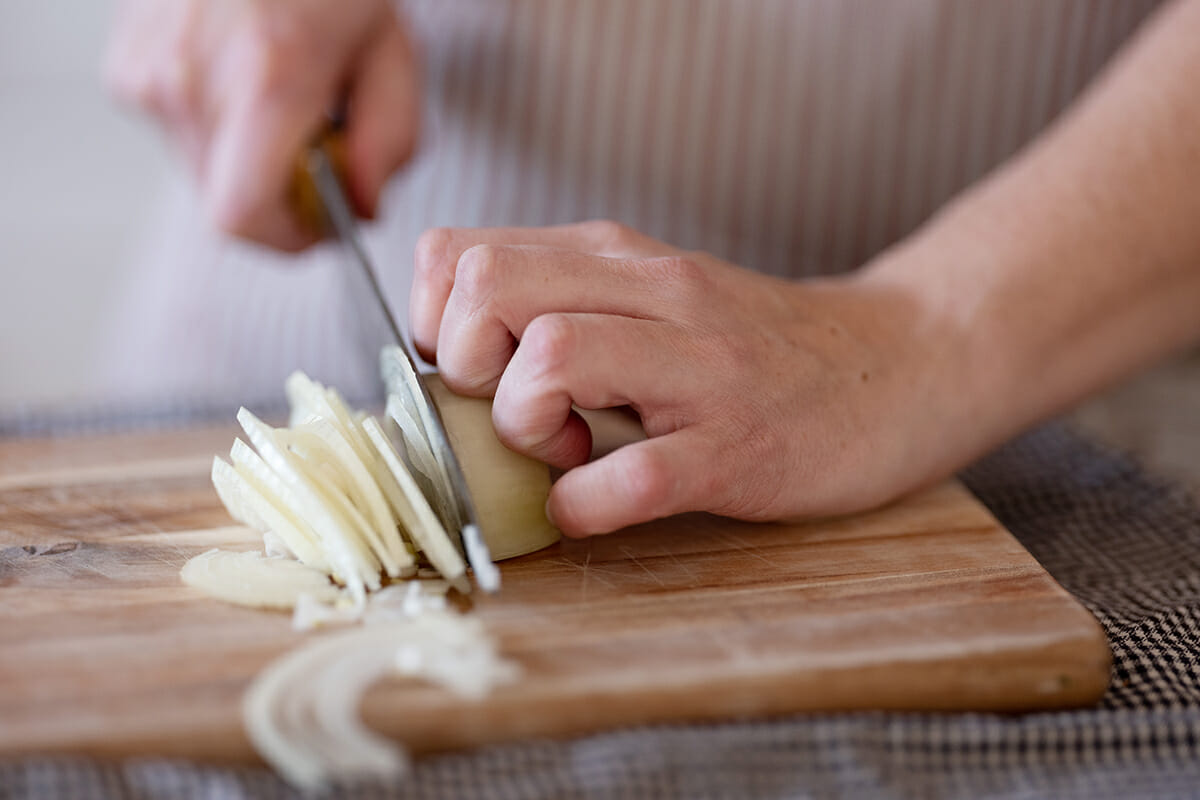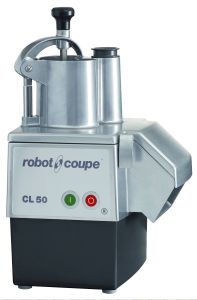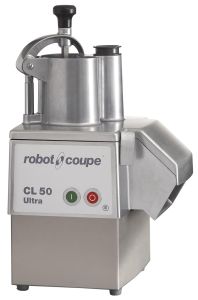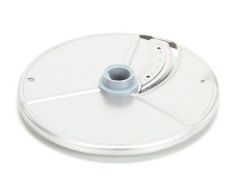When it comes to making full use of the food processor, most of us are likely to only focus on the three components, namely the bowl, lid and the standard blade that comes with it. But the truth is, food processors can do so much more beyond the basic blade.
The way vegetables are cut can vary depending on cooking styles and can actually make a huge difference in the cooking time as well as the taste of the dish.
Here are the different types of cuts to know when it comes to vegetable preparation.
Julienne
Also referred to as matchstick cut. The vegetables are sliced into strips that are usually about 3 inches long and 1/16- to 1/8-inch thick. This type of cut is usually used on gingers, capsicums, carrots and the like.
Batonette
This cut forms the basis of the dice, brunoise, and julienne technique. French fries and crudites or vegetable sticks are cut this way. First, square them off then cut lengthwise into 6mm-thin rectangular slices before cutting them into 1/5 inch sticks.
Dice
Dicing can be used in almost any type of vegetable. Perfectly diced vegetables are easy to cook and can add flavor to the dishes. There are few types of dice cut including brunoise, small dice, medium dice and large dice.
- Brunoise can also be known as fine dice, the smallest dice (roughly 1/8 inch) that are suitable for garnishing.
- Small dice is around 1/4 inch, slightly bigger than brunoise.
- Medium dice is approximately 1/2 inch.
- Large dice is roughly 3/4 inch, suitable for cooking broth or soup
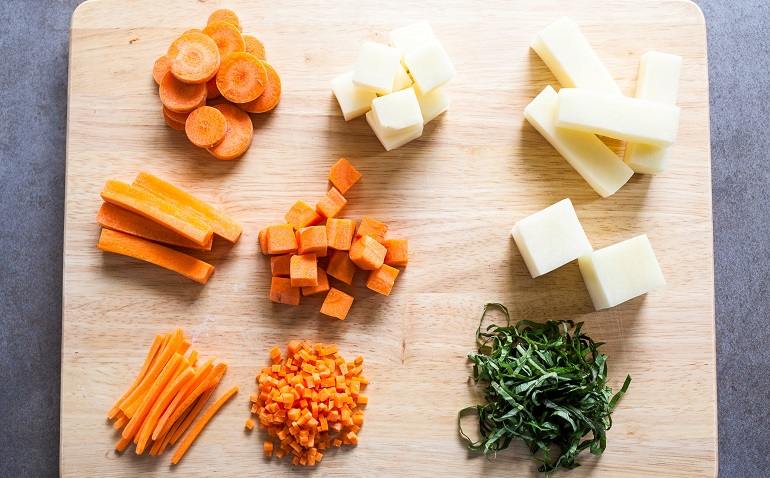
Slice
This is a technique in which vegetables are cut into flat and round disc. It is the preferred cutting style for round vegetables such as tomatoes, potatoes, and onions. Sliced vegetables can be served as ingredients and toppings for sandwiches, pizzas as well as burgers.
Chiffonade
This is a technique of cutting herbs and leafy vegetables into thin strips or ribbons. To do it, stack all the leaves together and roll them tightly. Use one hand to hold them down with the other hand slicing the leaves perpendicular to the roll.
- Fine chiffonade yields thin ribbons of herbs for garnishing
- Large chiffonade on leafy greens for sauté
Be sure to use the chiffonade vegetables and herbs immediately after cutting them as this technique causes the edges to darken quickly.
Paysanne
An informal French cut for cutting fruits, vegetables, and roots. Unlike the other cuts mentioned, the shape is not too specific, depending mostly on the shape of the vegetables.
In this style, vegetable are cut thinly about 1/2 inch and according to their shape.

